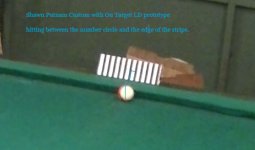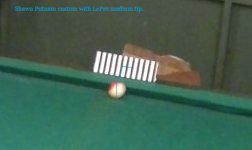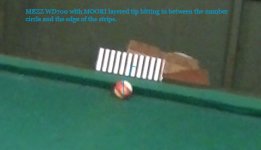I finally got around to testing the prototype tip Jaden sent me, along with a wide range of other tips of different hardnesses and heights. Check out the following video that documents the experiment and results:
NV D.15 - Cue and Tip Testing for Cue Ball Deflection (Squirt)
Here's an executive summary of the results:
Tip type, size, and hardness appear to have very little effect on CB deflection (squirt).
Here is a summary of the data from the video:
I was a little surprised by the results, because I did expect to see a much larger difference in squirt over the wide range of tip types, hardnesses, and heights we tested.
Jaden’s tip (the "experimental 2-material composite") is cool and innovative, and it certainly has a different look, sound, and feel, but the amount of squirt was not less than with the other tips in my set of tests. Honestly, I don't think this is necessarily a bad thing. There are both
advantages and
disadvantages to having a shaft (and/or tip) that produces less CB deflection (squirt).
Hopefully, Jaden and others and do similar tests on different shafts, and with additional prototype and production versions of the tip. It's not that difficult to do the tests. A camera helps with taking measurements, but contact paper on a board against the end cushion would work just as well.
Enjoy,
Dave



